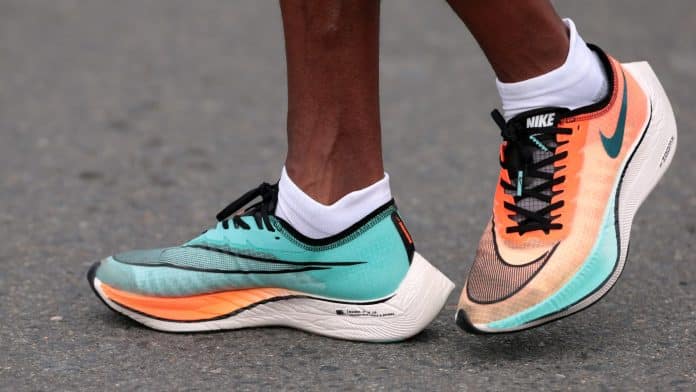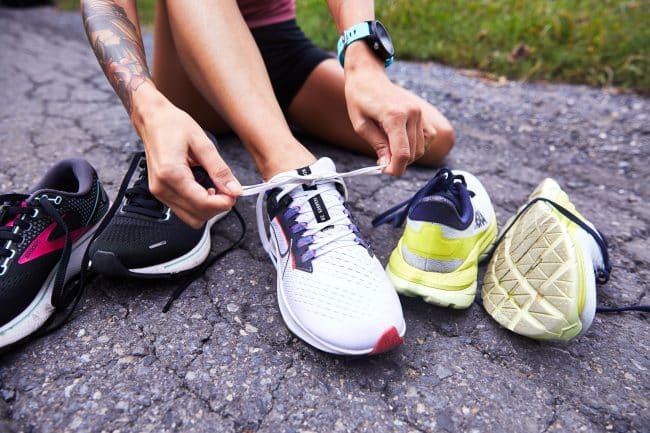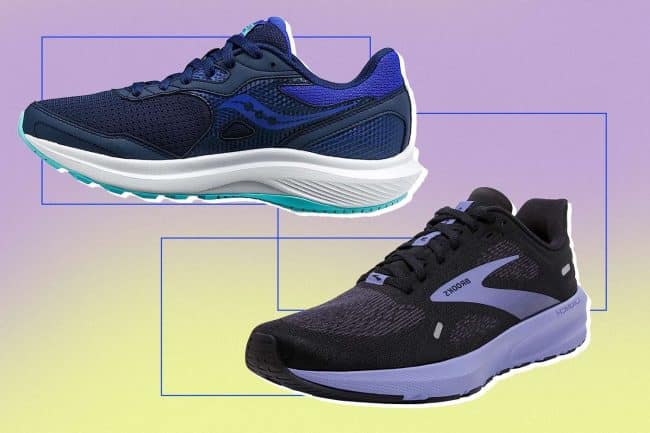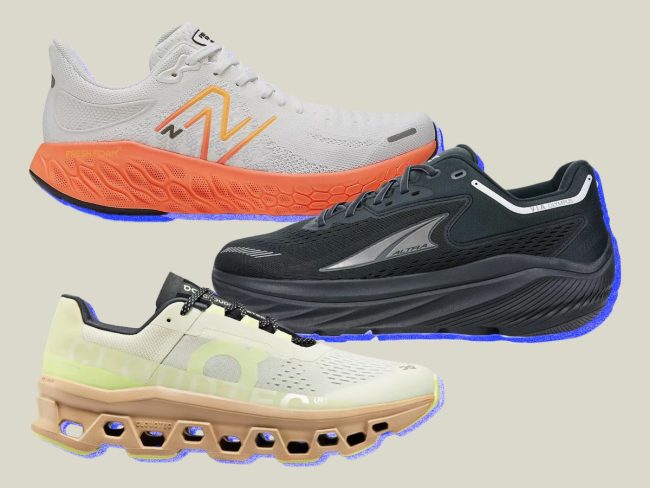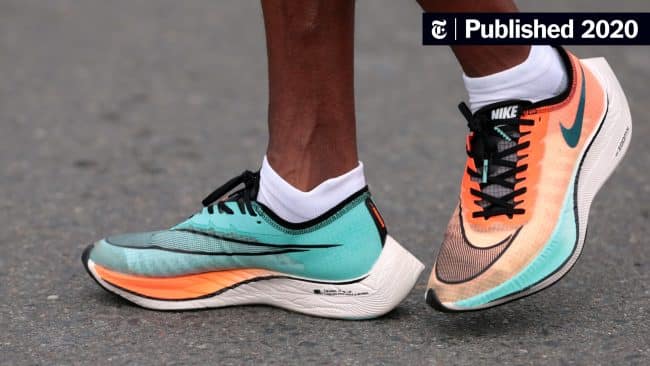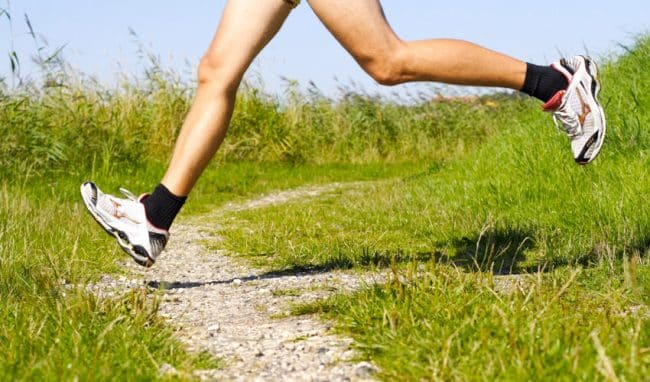Have you ever wondered if your running shoes provide enough cushioning for your feet? Well, fret no more! In this article, we will guide you on how to determine if your running shoes have the right amount of cushioning to keep you comfortable and protected during your runs. From analyzing shoe technologies to conducting simple tests, we’ve got you covered on all the tips and tricks you need to ensure a cushioned and enjoyable running experience. So, let’s dive in and discover the secrets to finding the perfect pair of shoes for your feet!
This image is property of hips.hearstapps.com.
Review contents
1. Understanding the Role of Cushioning in Running Shoes
1.1 Importance of Cushioning in Running Shoes
When it comes to running shoes, cushioning plays a crucial role in providing the necessary protection and comfort for our feet. The constant impact and pressure that our feet endure while running can lead to various issues such as joint pain, stress fractures, and injuries. Proper cushioning helps to absorb the shock and reduce the stress on our feet, allowing us to run comfortably and with reduced risk of injury. It acts as a barrier between our feet and the hard surfaces we run on, providing a soft and supportive base for every stride we take.
1.2 Benefits of Proper Cushioning
Proper cushioning in running shoes offers several benefits for runners of all levels. First and foremost, it helps to prevent injuries by reducing the impact on our joints and bones. It also improves overall comfort during runs, minimizing discomfort and fatigue that can hinder our performance. With adequate cushioning, runners can experience a smoother and more responsive ride, allowing them to maintain their form and stride efficiency. Additionally, cushioning can help to enhance shock absorption, reducing stress on muscles and tendons, and promoting faster recovery post-run. Overall, investing in running shoes with proper cushioning can greatly enhance our running experience and protect our feet from the potential harmful effects of running.
2. Evaluating Cushioning in Running Shoes
2.1 Shoe Type and Cushioning
The type of running shoe we choose can significantly impact the level and type of cushioning it provides. Different shoe types, such as neutral, stability, and motion control, offer varying degrees of cushioning to cater to different running styles and foot types. Understanding our pronation type (the way our foot rolls inward during each stride) can help in selecting the appropriate shoe type for our needs. While neutral shoes provide a balanced level of cushioning for those with a neutral pronation, stability shoes offer additional support and cushioning for runners with overpronation. Motion control shoes, on the other hand, are designed to provide maximum stability and cushioning for severe overpronators. Considering our foot type and pronation can guide us in choosing the right type of shoe with suitable cushioning.
2.2 Key Factors to Consider
When evaluating the cushioning in running shoes, it’s essential to consider certain key factors. The midsole, outsole, and upper are the primary areas to inspect. The midsole is where the main cushioning material is located and is responsible for shock absorption. It is typically made of foam compounds such as EVA (ethylene-vinyl acetate) or PU (polyurethane), which provide varying levels of cushioning and responsiveness. The outsole, on the other hand, protects the midsole and provides traction. It is crucial to ensure that it is durable and has adequate cushioning properties. Finally, the upper of the shoe should have enough padding and support to provide a comfortable and secure fit. Examining these factors will help us assess the overall cushioning quality of running shoes.
3. Visual Inspection of Running Shoes
3.1 Checking the Midsole
One of the first steps in evaluating cushioning in running shoes is visually inspecting the midsole. Look for any visible signs of wear and tear or compression in this area. Over time, the midsole can lose its ability to provide adequate cushioning, resulting in a flatter appearance and decreased shock absorption. If the midsole appears compressed or shows excessive creasing, it may be an indication that the cushioning has deteriorated. Additionally, pay attention to any areas of uneven compression, as this could suggest wear patterns that may lead to imbalances or discomfort during running.
3.2 Examining the Outsole
Another important area to examine when assessing the cushioning of running shoes is the outsole. This is the part of the shoe that comes into direct contact with the ground and provides protection, traction, and some degree of cushioning. Inspect the outsole for any signs of excessive wear, such as worn-down treads or smooth patches. Excessive wear can indicate that the cushioning properties of the outsole have deteriorated, reducing its ability to absorb impact effectively. A worn-out outsole may also affect traction and stability, potentially increasing the risk of slips and falls during runs.
3.3 Assessing the Upper
While the midsole and outsole are crucial for cushioning, the upper of the running shoe also plays a role in the overall comfort and support it provides. Check the upper for any signs of wear, especially in areas that come into contact with the foot, such as the toe box and heel counter. Ensuring that the upper is intact and has sufficient padding will help maintain the overall cushioning and structural integrity of the shoe. Moreover, inspect the quality of the stitching and seams, as any fraying or loose threads could indicate potential durability issues that may affect the cushioning.
4. Performing the Compression Test
4.1 Understanding the Compression Test
One effective way to evaluate the cushioning of running shoes is by performing a compression test. This test involves applying pressure to the midsole using our hands and observing the level of compression and responsiveness. By assessing how the midsole reacts to pressure, we can gain insights into the overall cushioning quality and resilience of the shoe. It is important to note that the compression test alone may not provide a comprehensive assessment, but it can serve as a useful tool in combination with other evaluation methods.
4.2 Steps to Perform the Compression Test
To perform the compression test, follow these simple steps:
- Place the shoe on a flat surface or hold it securely in your hands.
- Use both hands to apply equal pressure to the midsole area, near the heel and forefoot.
- Press down firmly and observe how the midsole compresses and rebounds.
- Ideally, the midsole should offer a degree of resistance and gradually rebound after pressure is released.
- If the midsole compresses excessively or fails to rebound adequately, it may indicate reduced cushioning capabilities.
Remember, the compression test should be done with both new and old shoes to make effective comparisons and assess any changes in cushioning over time.
This image is property of www.shape.com.
5. Listening to Your Body during Runs
5.1 Paying Attention to Impact and Shock Absorption
While the above methods can help evaluate the cushioning quality of running shoes, it is also important to listen to our bodies during runs. Pay attention to how our feet, joints, and muscles feel during and after running. Proper cushioning should effectively absorb impact and minimize the stress on our feet and lower body. If we consistently experience discomfort or pain, it may be a sign that our shoes are not providing sufficient cushioning. It is crucial to address this issue promptly to prevent further strain and potential injuries.
5.2 Identifying Signs of Discomfort or Pain
During runs, it is important to be aware of any signs of discomfort or pain. These may include sharp or dull pain in the feet, ankles, knees, or hips, as well as soreness, numbness, or tingling sensations. Such signs may indicate inadequate cushioning, improper shoe fit, or other biomechanical issues. If we experience persistent pain or discomfort, it is advisable to consult with a healthcare professional or a running specialist to assess our running form, shoe fit, and overall foot mechanics.
6. Consulting with a Professional
6.1 Visiting a Running Specialty Store
When it comes to selecting running shoes with proper cushioning, visiting a running specialty store can provide valuable insights and guidance. The knowledgeable staff in these stores are equipped with expertise to analyze our gait, foot type, and pronation, thus recommending suitable shoe options. They can assess our specific needs and help us find running shoes that offer the optimal level of cushioning and support for our individual requirements. Additionally, they may offer the opportunity to try out different shoe models on a treadmill or in-store to assess comfort and performance.
6.2 Seeking Advice from a Podiatrist or Sports Podiatrist
For those with specific foot conditions or concerns, consulting with a podiatrist or sports podiatrist can provide personalized recommendations. These healthcare professionals specialize in foot and ankle health and can assess our foot structure, biomechanics, and any underlying issues that may impact our choice of running shoes. They can offer valuable advice on selecting appropriate footwear to cater to our specific needs, ensuring that the cushioning adequately addresses any unique considerations.
This image is property of hips.hearstapps.com.
7. Considering Your Running Style and Preferences
7.1 Assessing Your Pronation Type
Understanding our pronation type is crucial in selecting running shoes that offer the appropriate cushioning and support. Pronation refers to the natural inward rolling motion that our foot undergoes with each step. There are three main pronation types: neutral, overpronation, and underpronation (supination). By assessing our pronation type, we can determine the level of stability and cushioning required in our running shoes. This ensures that our shoes effectively address any biomechanical imbalances and provide optimal support during our runs.
7.2 Personal Comfort and Running Performance
In addition to considering pronation type, it is important to prioritize personal comfort and running performance when selecting running shoes with suitable cushioning. Each individual may have different preferences and requirements when it comes to cushioning, and it is crucial to find the right balance. Some runners may prefer a firmer cushioning for a more responsive feel, while others may prioritize a softer cushioning for maximum comfort. Experimenting with different shoe models and brands can help us identify our personal preferences and find the shoes that best suit our running style and goals.
8. Understanding the Lifespan of Running Shoes
8.1 Factors Affecting Cushioning Deterioration
While running shoes provide cushioning, it is important to note that this cushioning can deteriorate over time. Factors such as mileage, frequency of use, running surface, and individual running mechanics can contribute to the degradation of cushioning properties. The repetitive impact of running gradually breaks down the foam compounds in the midsole, reducing their ability to provide adequate shock absorption and cushioning. Moreover, environmental factors such as heat and humidity can accelerate the breakdown of cushioning materials. Recognizing these factors can help us understand why running shoes need regular replacement.
8.2 Recommended Mileage and Time for Shoe Replacement
As a general guideline, running shoes should be replaced approximately every 300-500 miles, depending on the individual and the shoe’s cushioning technology. Tracking our mileage using a running app or keeping a running log can help us determine when it is time to replace our shoes. Additionally, those who engage in high-impact activities or have a heavier body weight may experience more rapid cushioning degradation and might need to replace their shoes more frequently. It is important to prioritize shoe replacement to ensure that we continue to receive the necessary cushioning and support for safe and comfortable running.
This image is property of static01.nyt.com.
9. The Importance of Trying Different Shoes
9.1 Experimenting with Various Brands and Models
Finding the perfect running shoes with the ideal cushioning can often involve some trial and error. Every runner’s feet and preferences are unique, and what works well for one person may not necessarily work for another. Therefore, it is important to experiment with different brands and models to find the shoes that offer the best combination of cushioning, comfort, and performance for us. Trying out various options can provide valuable insights and help us identify the shoes that truly meet our specific needs.
9.2 Seeking Professional Gait Analysis
For a more specialized evaluation, seeking professional gait analysis can provide additional guidance in the selection process. Gait analysis involves assessing the way we walk and run, including our foot strike, pronation type, and overall biomechanics. By observing our gait patterns, a professional can provide detailed insights into our running mechanics and recommend running shoes with suitable cushioning and features to address any imbalances or concerns. Gait analysis can be conducted at running specialty stores, podiatry clinics, or with the assistance of a certified running coach.
10. Continuously Monitoring Cushioning Quality
10.1 Regularly Inspecting Shoe Wear and Tear
To ensure that our running shoes continue to provide adequate cushioning, it is important to regularly inspect them for signs of wear and tear. Check the midsole, outsole, and upper for any visible damage or excessive compression. Look for worn-out treads, compressed midsole foam, or any signs of structural instability. Additionally, pay attention to the overall comfort and responsiveness of the shoes during runs. Any noticeable decline in cushioning or increased discomfort may indicate that it is time to consider replacing the shoes.
10.2 Listening to Feedback from Your Feet
One of the most important aspects of monitoring cushioning quality is listening to the feedback from our own feet. During and after runs, pay attention to how our feet feel. Do we experience any discomfort, pain, or unusual sensations? If our feet consistently feel fatigued or if we notice any unusual changes, it may indicate issues with the cushioning of our running shoes. By staying in tune with our bodies and being attentive to any signals of discomfort, we can address potential cushioning issues early on and ensure that we continue to run comfortably and injury-free.
In conclusion, understanding the role of cushioning in running shoes is essential for any runner looking to optimize their running experience. By recognizing the importance of cushioning, evaluating shoe quality, and considering personal preferences and style, we can find the shoes that provide the perfect balance of comfort and performance. Regular monitoring of cushioning quality and timely replacement of worn-out shoes will ensure that we consistently receive the necessary support and protection for our feet. So, lace up those shoes with proper cushioning, listen to your body, and enjoy the benefits of a comfortable and injury-free running journey. Happy running!
This image is property of cdn.shopify.com.

